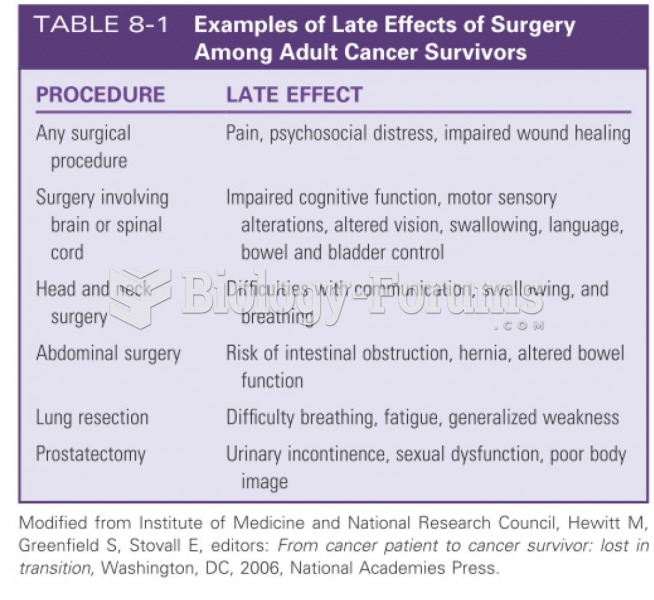Answer to Question 1
Correct Answer: 1,2,3
Rationale 1: High-pitched tinnitus may be a symptom of ototoxicity and impending inner ear damage.
Rationale 2: Vertigo may be a symptom of ototoxicity and impending inner ear damage.
Rationale 3: Nausea and vomiting may be symptoms of ototoxicity and impending inner ear damage.
Rationale 4: Diarrhea is not a symptom of a severe adverse reaction to the aminoglycoside and would not need to be reported immediately to the physician.
Rationale 5: Rash is not a symptom of a severe adverse reaction to the aminoglycoside and would not need to be reported immediately to the physician.
Global Rationale: Because many older adults have some degree of preexisting hearing impairment, permanent deafness may occur in this group. Signs of impending inner ear damage include high-pitched tinnitus, headache, nausea, vomiting, and vertigo. Diarrhea may occur when taking aminoglycosides, but is not a reason to immediately collaborate with the prescriber. Rash is not associated with aminoglycosides.
Answer to Question 2
Correct Answer: 1,2,3
Rationale 1: Azithromycin causes less nausea.
Rationale 2: Azithromycin may be taken with or without food.
Rationale 3: Azithromycin is a category B drug and is safe for pregnant clients.
Rationale 4: Diarrhea and abdominal pain are the most common adverse effects of azithromycin.
Rationale 5: There are clients who are hypersensitive to macrolides and should not receive azithromycin.
Global Rationale: Azithromycin causes less nausea, can be taken without regard to food ingestion, and is safe for pregnant clients. Diarrhea and abdominal pain are side effects. There are clients who are hypersensitive to macrolides and should not receive azithromycin.







